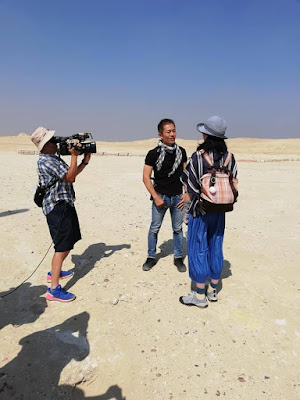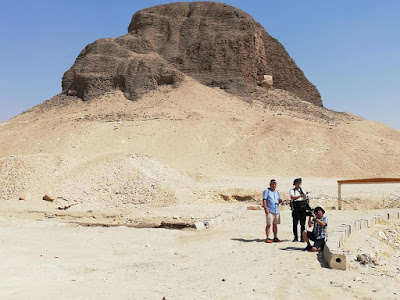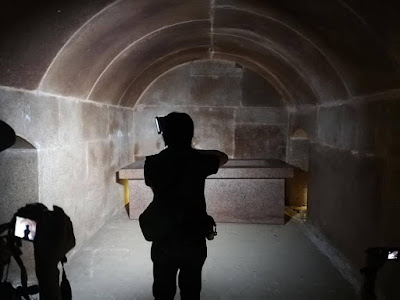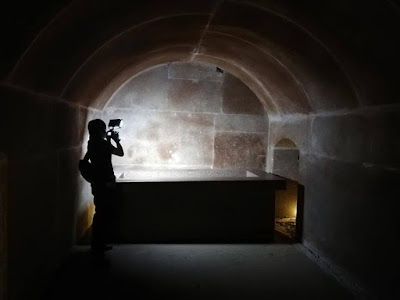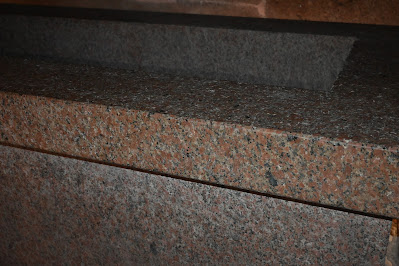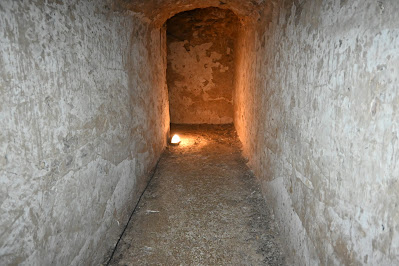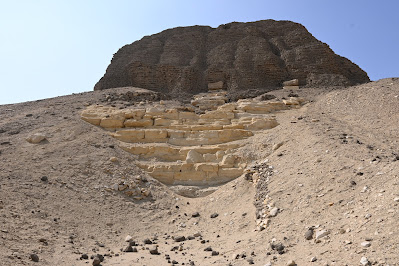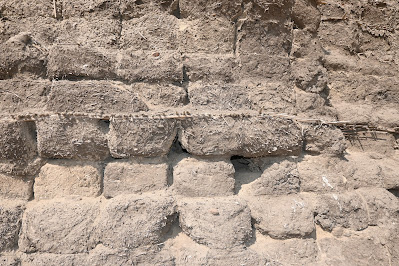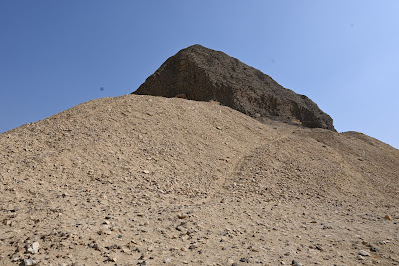The location of Senusret II's valley temple is known but no ground plan can be made from its ruins. The causeway is likewise ruined, but must have been broad, and of the completely destroyed mortuary temple on the east side of the pyramid, all that is known is that it must have been built of decorated granite, judging from the few fragments that remain.
4,000 year- old pyramid – built from mud brick, with a stone wall core infilled by mudbrick – was constructed for pharaoh Senusret II in the 20th dynasty on a 12 metre hill at the outskirts of El-Lahun city. There was an attempt to open up the tomb back in 1989, however due to its existence of corridors and depth it was a failed attempt
The Japanese TV at the Lahun Pyramid in Fayoum
Senusret II chose to build his pyramid, called Senusret Shines, near the modern town of Lahun (Kahun) at the opening of the Hawara basin near the Fayoum, rather than at Dahshur where his father's (Amenemhet II) pyramid is located. It was first investigated by the Lepsius expedition in the 1840s, but was only later examined in detail by Petrie.
4,000 year- old pyramid – built from mud brick, with a stone wall core infilled by mudbrick – was constructed for pharaoh Senusret II in the 20th dynasty on a 12 metre hill at the outskirts of El-Lahun city. There was an attempt to open up the tomb back in 1989, however due to its existence of corridors and depth it was a failed attempt
The Japanese TV at the Lahun Pyramid in Fayoum
Senusret II chose to build his pyramid, called Senusret Shines, near the modern town of Lahun (Kahun) at the opening of the Hawara basin near the Fayoum, rather than at Dahshur where his father's (Amenemhet II) pyramid is located. It was first investigated by the Lepsius expedition in the 1840s, but was only later examined in detail by Petrie.
Book your visit to Kom Oshim
karen Tours : 01001918549
